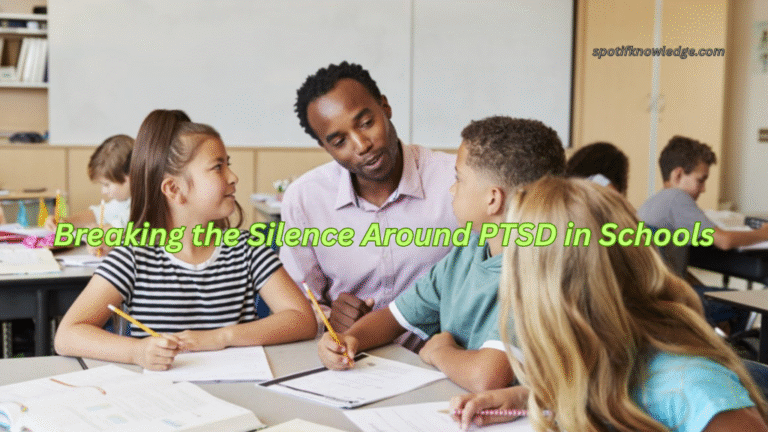Trauma does not wait at the schoolhouse door. Students carry the weight of violence, displacement, neglect, disasters, and chronic stress into their classrooms, where it can distort attention, memory, and trust.
Post-traumatic stress disorder (PTSD) is not always loud; more often, it hides in a quiet pattern of avoidance, hypervigilance, and exhaustion that adults misread as defiance or apathy. When we name what is happening and respond with care, we turn school from a triggering place into a stabilizing space.
What PTSD Looks Like in the Classroom
PTSD can masquerade as “not trying.” A fire drill might send a child into panic; a slammed locker can trigger a flashback. Sleep problems lead to tardiness and incomplete work. Some students dissociate—staring through a lesson—while others become restless, constantly scanning the room for danger.
Educators may notice perfectionism, sudden anger, or refusal to participate. These are survival strategies, not character flaws, and they signal the nervous system is working overtime to stay safe and ready to learn.
Why Silence Persists
Silence endures because trauma feels personal, and schools fear overstepping. Teachers worry about saying the wrong thing; families worry about stigma; students worry about being singled out. Time pressures and test scores push mental health down the priority list, and many staff members lack training or support.
Without shared language and clear protocols, adults default to discipline rather than curiosity. Breaking the silence begins with brave conversations, confidential referral pathways, and leadership that treats mental health as core to learning.
Practical Steps Schools Can Take
A trauma-informed approach starts with predictable routines and flexible responses. Offer calm corners, choice in assignments, and movement breaks. Teach grounding skills—box breathing, 5-4-3-2-1 sensory scans, and brief check-ins—to help students regulate. Replace “What’s wrong with you?” with “What happened to you—and what do you need right now?”
Build multitiered supports: universal social-emotional learning, targeted small groups, and access to counseling. Safeguard sleep and safety by moderating homework load, limiting unnecessary noise, and ensuring consistent, caring adult relationships.
Partnering with Families and Communities
Trust grows when schools invite families into problem-solving rather than compliance. Share observations with compassion, ask what helps at home, and co-create practical plans—quiet signals, water breaks, alternate testing locations.
Culturally responsive practices honor different expressions of distress and community healing traditions. Montessori schools, with their emphasis on autonomy, choice, and orderly environments, can model trauma-sensitive design that reduces triggers. Partnerships with clinics, shelters, youth programs, and faith groups build a safety net that extends beyond the bell.
Conclusion
Acknowledging PTSD does not lower expectations; it clears the path to meet them. Safety, connection, and predictability are not extras—they are the neurological prerequisites for attention and memory. When staff are trained, routines are calming, and families are partners, discipline shifts from control to collaboration.
Listening restores dignity: students are more than what happened to them. By breaking the silence, schools become places where healing is ordinary, hope is practiced daily, and academic success can finally take root.

